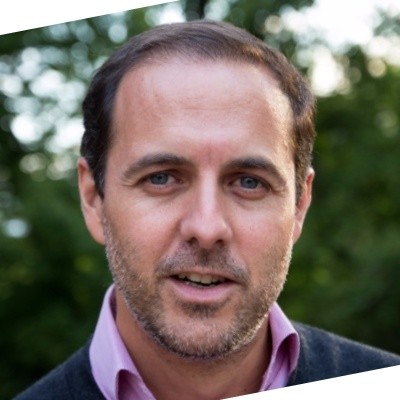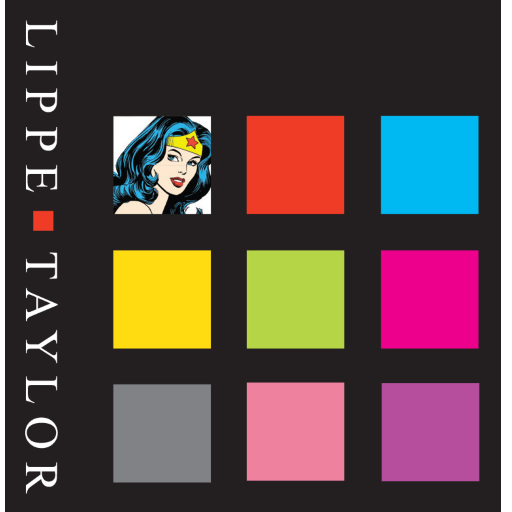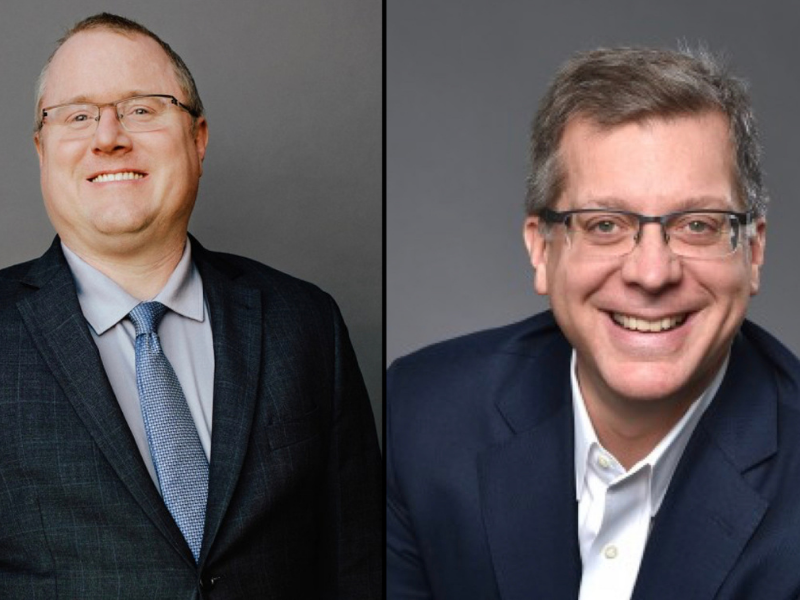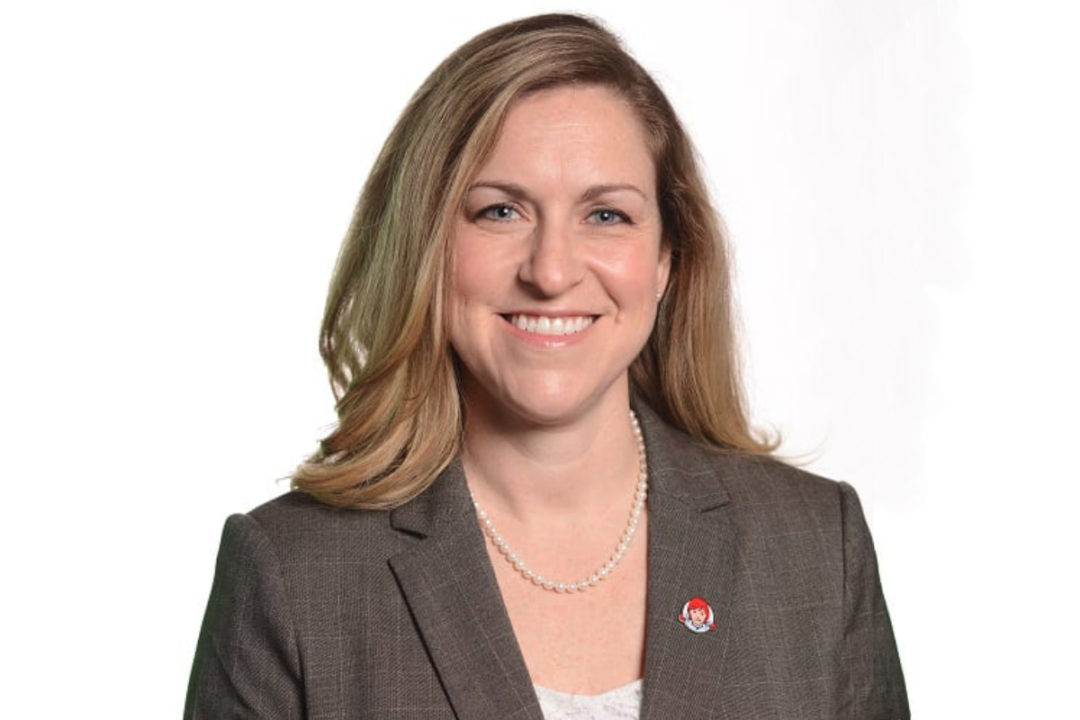Lippe Taylor 27 May 2020 // 8:00PM GMT

In today's interview, Lippe Taylor CEO Paul Dyer sits down with Javier Boix, the Head of U.S. Communications at AbbVie to discuss the importance of storytelling in the greater context of communications and analytics. The conversation also gets into Javier's career approach to being a generalist versus a specialist along with leadership lessons and more.
Here are some key takeaways from this conversation with Javier:
-
Communications pros need to focus on creating a model for always-on storytelling. There is an increasing number of platforms on which a brand can tell its story, and this enables comms professionals to identify ways to keep the storytelling engine running. Whether it’s social media, a brand newsroom, or an online publication, the demand for original content requires communicators to focus on keeping the brand narrative alive across multiple platforms simultaneously. Conversely, one-off campaigns may be distracting and not advance the larger story. Ultimately, communications professionals need to take a multichannel approach and ensure that their brand's story has cohesion across all platforms.
-
Don’t mistake the brand for the “hero” of the story. Although brands play a role in stories, they should never be the center of the narrative they are trying to create. Compelling stories are about heroes, whether that is the patient bravely fighting a disease for 40 years, or the scientist devoted to finding a cure for Hepatitis C. These are the Hero's Journeys (in the Joseph Campbell sense) which audiences are hardwired to follow. Before running U.S. Communications, Javier oversaw AbbVie’s StoryLab, a content strategy team that brought the work of different departments to life through content development. This type of narrative-focused storytelling enabled AbbVie to be part of conversations by creating relevant, engaging, and authentic content without overtly pushing their brand.
-
A global mindset is about understanding local needs. Javier believes that having a global mindset is about knowing how to establish the right relationships within key markets. It’s the local communicators, however, who know how to translate big-picture ideas so that the global strategy makes sense on a local level. On the ground, communicators are tapped into the cultural nuances and local regulatory requirements and they own the relationships that enable them to execute the larger global strategies within specific countries. Javier states that “you are in a global role to understand local teams, not so they can understand you.”
Paul Dyer: Thanks for taking the time to speak with us. I think when you and I last crossed paths, you were still running StoryLab, which you created from the ground up inside of AbbVie. Now you're the Head of U.S. Communications, which seems like the core of communications, whereas StoryLab always felt like it was the innovator and the disruptor. How do you think about those two things?
Javier Boix: StoryLab was an amazing experience—and, I would say, experiment—because it was the first time that AbbVie wanted to try a centralized approach to all things connected to content, content development and storytelling. We wanted to establish a culture of storytelling within the communications function and enterprise-wide that went beyond corporate speak to do things in a much more engaging fashion.
StoryLab was about driving the company’s narrative. Now, after two plus years in this U.S. communications role, we've changed and evolved in a way that has lots of similarities with the StoryLab mindset – which is very rewarding.
PD: It feels like StoryLab was where the innovation happened. Now that you're managing the team for the U.S., you're pulling the things that you learned into the broader communications function. So what are some examples of that?
JB: To me, the best example is this notion of being storytellers versus being communicators. I think that although it's become a buzzword that everyone uses with more or less meaning, communicators today need to be able to leverage storytelling as a critical part of their job, and think about their work as creating an “always-on” way to engage with audiences through content. And there is not good, or relevant, or engaging storytelling without understanding analytics and insights, and how they inform content strategy and creation.
PD: It’s exciting to hear somebody speak about storytelling and analytics. Usually, the creatives are talking about storytelling and then the quants are over in a different corner. Are you able to bring those together within your team?
JB: It is a never-ending effort, a constant evolution. We can get better, but we'll never be there, and that's the beauty of it. We are serving hundreds of thousands of patients, we’re going after the toughest health challenges, and in the U.S., we are a large organization that has amazing analytics and consumer marketing teams. None of those are public affairs, but we do work in the same environment that we call “brand teams.” We are all here to support and advance our brand narrative.
If we didn't leverage our access to insights and data to do our work better, we would be missing a huge opportunity. When I started my career, communications was an art -it was very much about being a good writer. Now communications is much more a science than an art.
The variety, the richness of the formats, channels, and the possibilities that we have are endless.
PD: There's a lot of discussion about specialization versus generalization in the marketing industry. Where do you fall on that, as a communications professional?
JB: I would say that I'm a generalist. I don't think I'm particularly good at any one thing. At this point in my career, the ability to align and lead my team, and create opportunities for them to truly enjoy and succeed in this reality that now we are operating under, is very rewarding.
PD: As you think about building out your team, are you looking for more generalists or more specialists?
JB: I'm looking for people able to understand the big picture, who have good judgment, who are passionate and have the drive and the energy to think differently and make things happen. Everything else can be learned.
PD: We've interviewed communications leaders from a wide range of global industries. Obviously, all industries have varying degrees of importance placed on local regions versus global. Healthcare has a whole unique set of challenges related to each country that you operate in. As somebody who was raised, lived and worked in Spain, and now you're in Chicago, what's your perspective on communications professionals having global expertise and experience versus having a global understanding?
JB: The ability for people to establish the right relationships with the countries is very important when you're in a global role--understanding their sensitivities, their resources and understanding how different healthcare systems work. And no matter how good you are, you still need the people on the ground who are going to make their own decisions from a tactical standpoint – hopefully with your guidance. I believe it is paramount to have an open mind and internalize that you are in a global role to understand them, not so they understand you. That’s a very important distinction.
PD: I think there are probably a lot of people listening to this that agree with your philosophy about being storytellers and focusing on content development and distribution as part of the communications function. One of the challenges that I hear frequently is not knowing how to change the measurement paradigm. They're measured against certain metrics, impressions and things like that. Is changing the measurement paradigm to account for a completely different way of doing things something you've had to deal with in the past? How do you go about that?
JB: That's the million-dollar question. Here's how I think about it. First of all, public affairs and communications are not alone in this. Secondly, make friends with consumer marketing and analytics teams. Big time. That's why we’re more and more in highly matrixed organizations, where the functions blend and become brand centric vs. function centric. I constantly push my team so that they understand that I don't want to see big wins for communications. I want to see big wins for the brands that we represent – and those wins must be compatible with what we stand for as an organization, since our positive reputation as an organization should always prevail.
PD: Absolutely.
JB: I want my team to think about things that we can add value to within the brand environment. What's the brand story? What are the insights that help us better understand the patient journey? How can I better understand how to support the business and how to advance the business priorities? My obsession is to demonstrate value to the brand and to demonstrate that we can contribute to advancing the brand's priority. You can only do so if you're working effectively in this highly matrixed environment where you understand things, like the most valuable actions that we're trying to drive consumers to do.
PD: That is a marketing concept.
JB: Indeed. No need to reinvent the wheel. Don't come up with the most valuable actions from a communications standpoint--that doesn't exist. Come up with the best ways, from a tactical standpoint in this case, for communications to drive value and to drive your target audience to those actions.
Back to my point earlier - think about this always-on content engine, all the activations that you want to make. Then, over the course of several months, look at it, or go back to your metrics dashboard that is pulled together by the brand team. See if there are any ticks there that may or may not overlap with your activities. Your activities don't happen in isolation.
The key is establishing that very, very healthy, productive and efficient relationship with paid media teams, consumer marketing, HCP marketing, analytics, promotion, and customer experience. We are working in this direction – still a lot of work to do though!
I remember years ago, where we needed to stand by what public affairs was and defend our territory. Now, everything is shifting toward a much more synergistic, consolidated vision of how to engage with your consumers. How do we come together to engage with the consumer, understanding that each one of these functions has value to add? We are having this conversation, versus that old conversation regarding whether public affairs should have a seat at the table – we earned it.
PD: You've said that AbbVie does not necessarily need to be the hero of every story you tell. Who is the hero, and how do you decide who the right hero is for a story?
JB: We can probably generalize that when you tell your internal stakeholders, including (but not limited to) marketing, that you don't see your company or your product as the hero of the story, you raise some questions and eyebrows.
Not long ago, we hosted Steve Clayton, Microsoft's Chief Storyteller, here and we held a Q&A with our marketing colleagues as the audience. Obviously, the work he's done with Microsoft over the last few years has been amazing. He made the point that the hero in the story can be the janitor that closes and opens the office every morning and every night, and I make the point that it can be the person who is living with a disease for 40 years. Or the caregiver who has been caring for that patient for X number of years. Or the scientist whose life has been devoted to finding a cure for hepatitis C. But it's never the product.
I always go back to the concept of: “Show, don't tell.” We are sometimes too obvious when we communicate. You don't want to say how great you are. You want to show it. There are many ways that storytelling gives you the ability to show how great you are without telling people how great you are.
As a reference, when we started to create the StoryLab team, we always used to go back to the site GE reports.
PD: That's a great site.
JB: Certainly. I remember coming across this interview from Thomas Kellner, GE’s Chief Storyteller, where he said that if you go to a dinner party and you start talking about yourself, people will basically disconnect-- but if you go to that same conversation and start talking about your experiences, your failures, your successes, your point of view, people will stick with you.
Communications is no different. We're not yet there, but that's the mindset that we need to adapt. There are other amazing examples, like JnJ’s overall approach, including the very cool ‘The Road to a Vaccine’ live video series.
PD: Last question: You created StoryLab five years ago. As you think about the next five years, what is the change in mindset or the new perspective that you think people in comms really need to embrace?
JB: My view is that the company that best aligns organizational structure and mindset with the insights-content-engagements-measurement continuum will excel at driving brand reputation, relevance and preference.
The possibilities we have today will only increase. Also, the world as we know it is changing due to this very challenging coronavirus situation and understanding its implications on our work will become critical going forward.
Lastly, the bigger we think about our job as communicators the more opportunities we will have from a career standpoint, from a development standpoint, and from a learning standpoint. Just go for it!
PD: I think that's a very inspired view for the future, and I very much hope that you end up being correct. Thank you for sharing your thoughts today.
JB: Thank you, Paul. My pleasure.


































.jpg)














